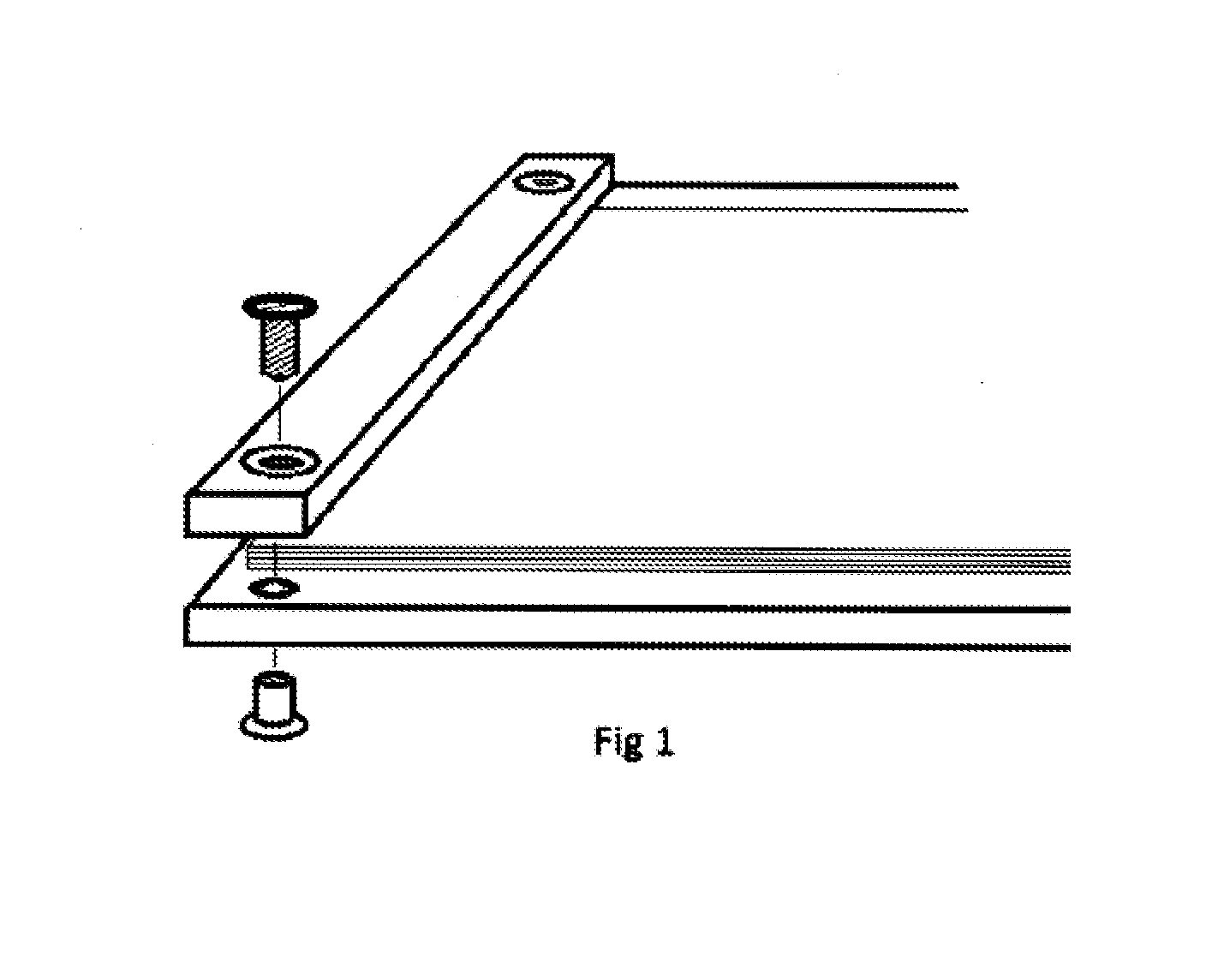Hole-Less Editable Binding System
a technology of editable binding and editing system, which is applied in the direction of fastening means, printing, apparel, etc., can solve the problems of human error, physical injury, and human damage, and add extra steps and financial costs in creating a book or portfolio
- Summary
- Abstract
- Description
- Claims
- Application Information
AI Technical Summary
Benefits of technology
Problems solved by technology
Method used
Image
Examples
Embodiment Construction
[0018]A channel hole 12 is made at the top of both a dense bar 11 constructed from a high density material such as metal, wood, bone or polymer. The bar is placed along a paper or fabric stack margin and again at the corresponding area of a dense material backing board. Another channel hole 12 is made at the bottom (opposite end) of both the same bar and backing board.
[0019]Threaded bolts 13 and screw posts 14 are inserted through the channels 12. The screw post assembly is hand-fastened as far down / in as necessary while allowing generous room for the paper or fabric stack 15 that is to be inserted. The edge of the paper or fabric stack is then inserted under the long end of the bar through the gap between the two screw posts where they will be held neatly and securely. The stack 15 is aligned flush against the long edge of the bar and a dense backing board 16. Finer adjustments of the screw post heads are made to bear down tightly on the paper or fabric stack. The placement of the ...
PUM
 Login to View More
Login to View More Abstract
Description
Claims
Application Information
 Login to View More
Login to View More - R&D
- Intellectual Property
- Life Sciences
- Materials
- Tech Scout
- Unparalleled Data Quality
- Higher Quality Content
- 60% Fewer Hallucinations
Browse by: Latest US Patents, China's latest patents, Technical Efficacy Thesaurus, Application Domain, Technology Topic, Popular Technical Reports.
© 2025 PatSnap. All rights reserved.Legal|Privacy policy|Modern Slavery Act Transparency Statement|Sitemap|About US| Contact US: help@patsnap.com



